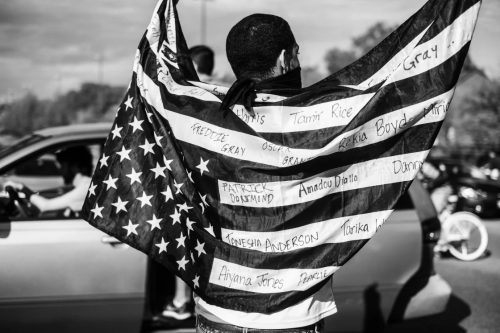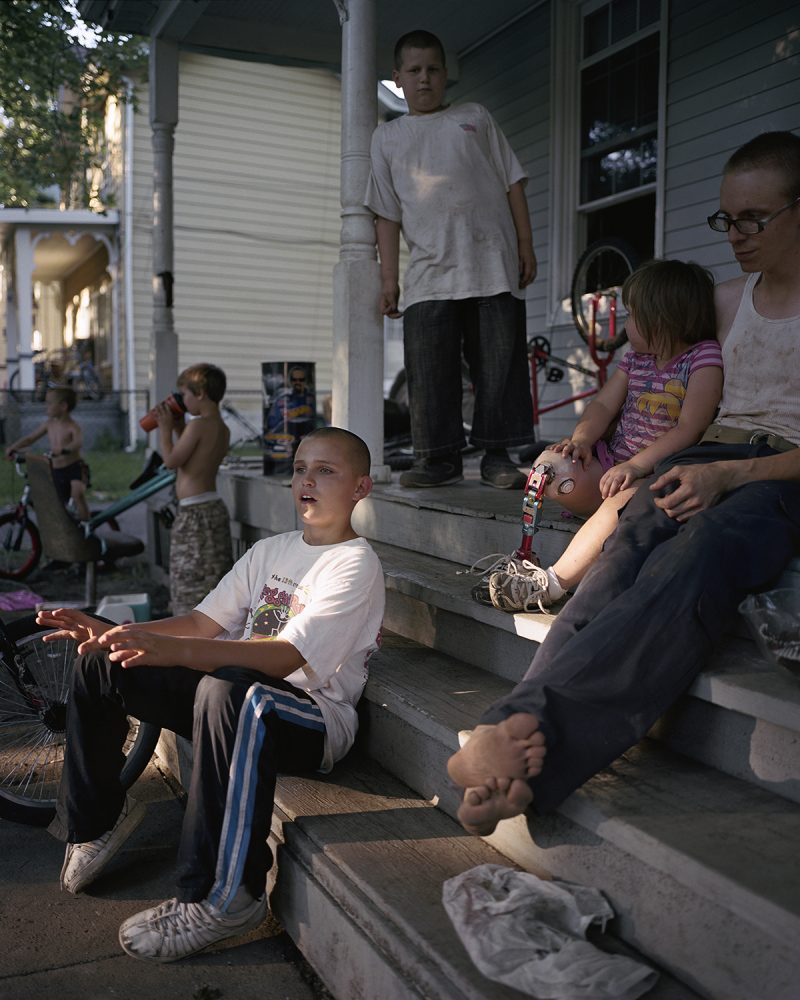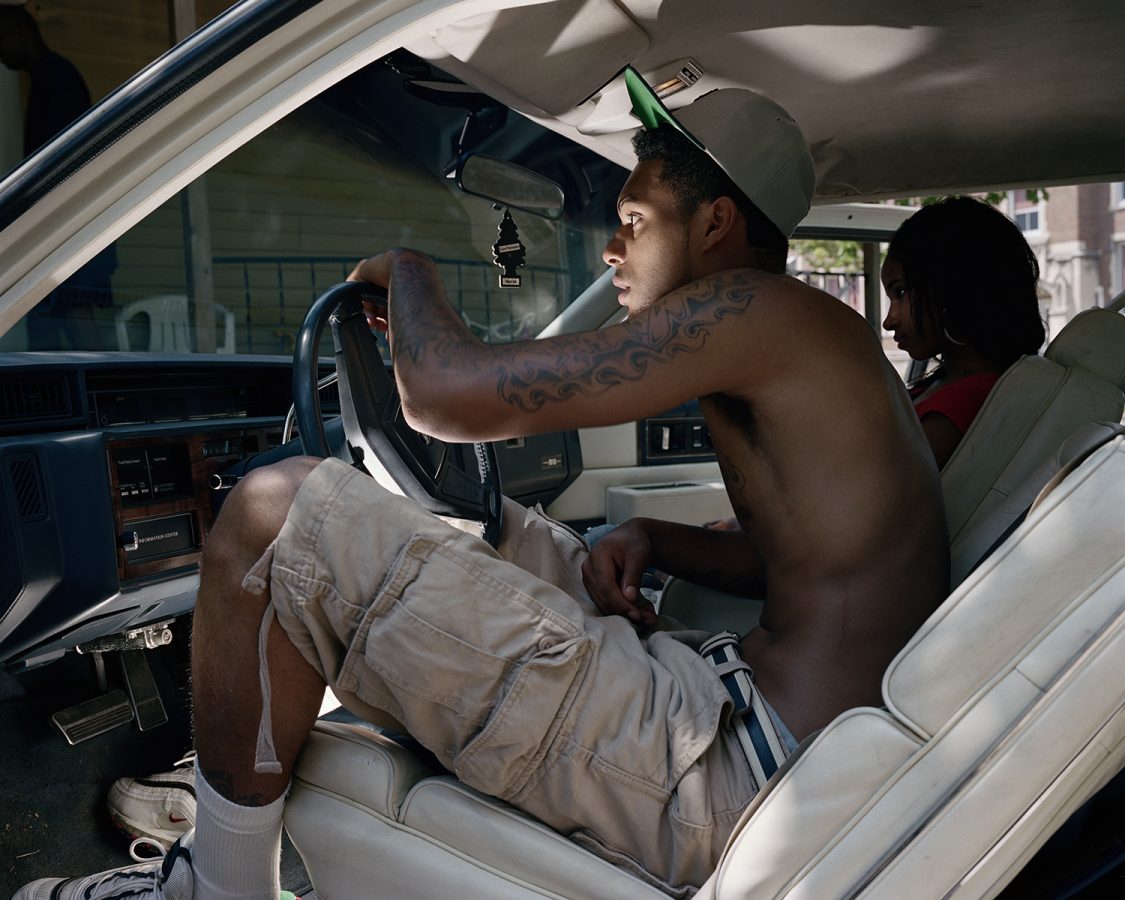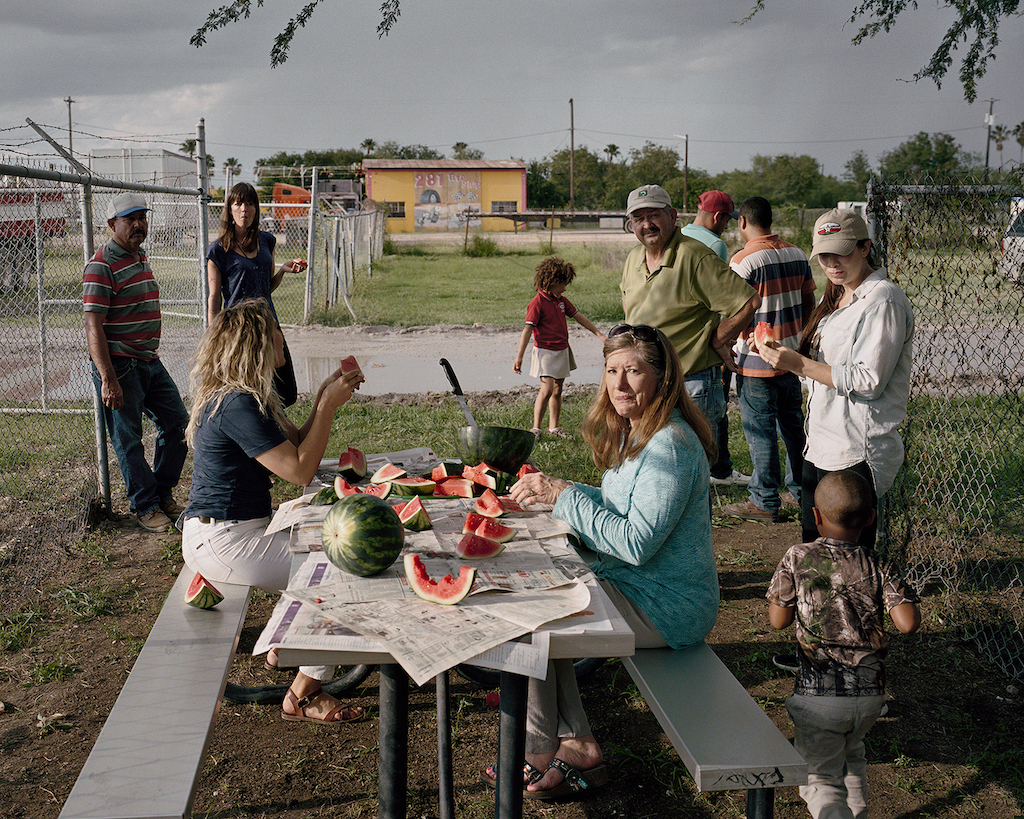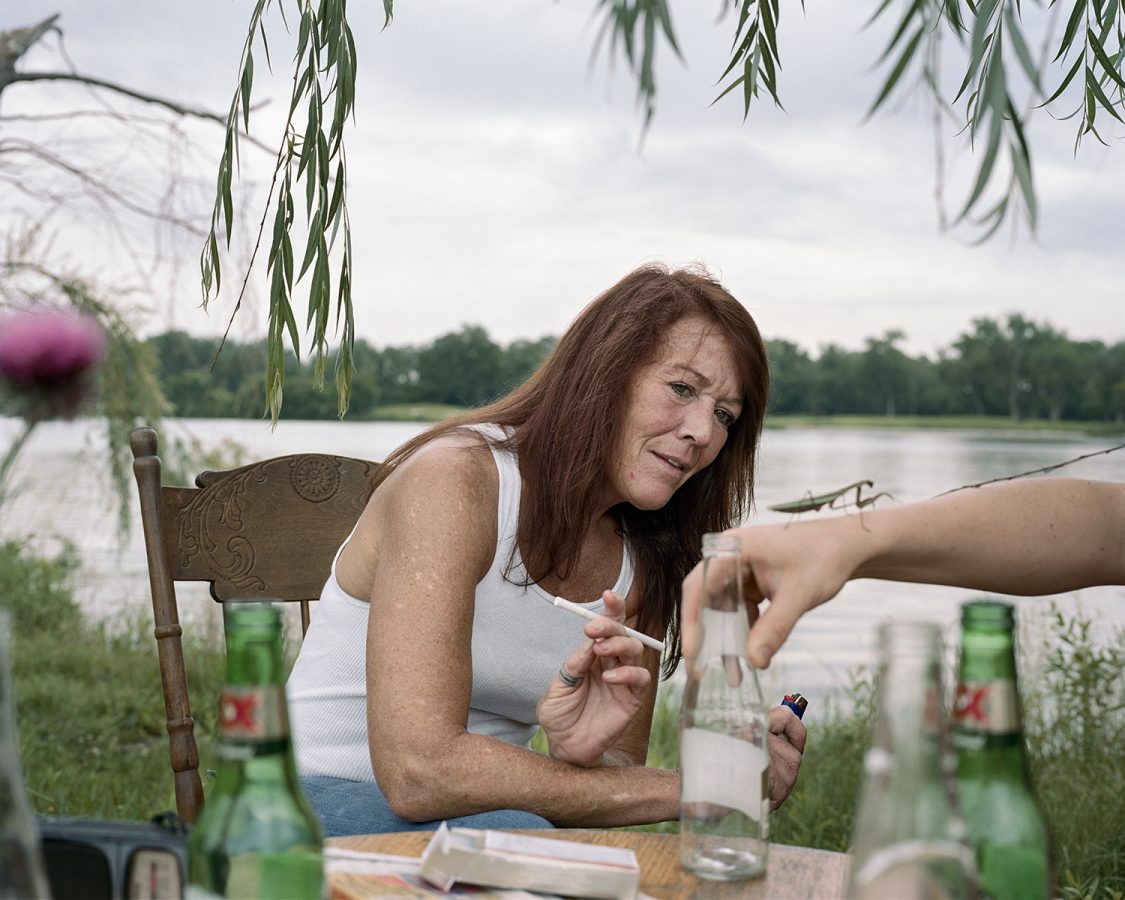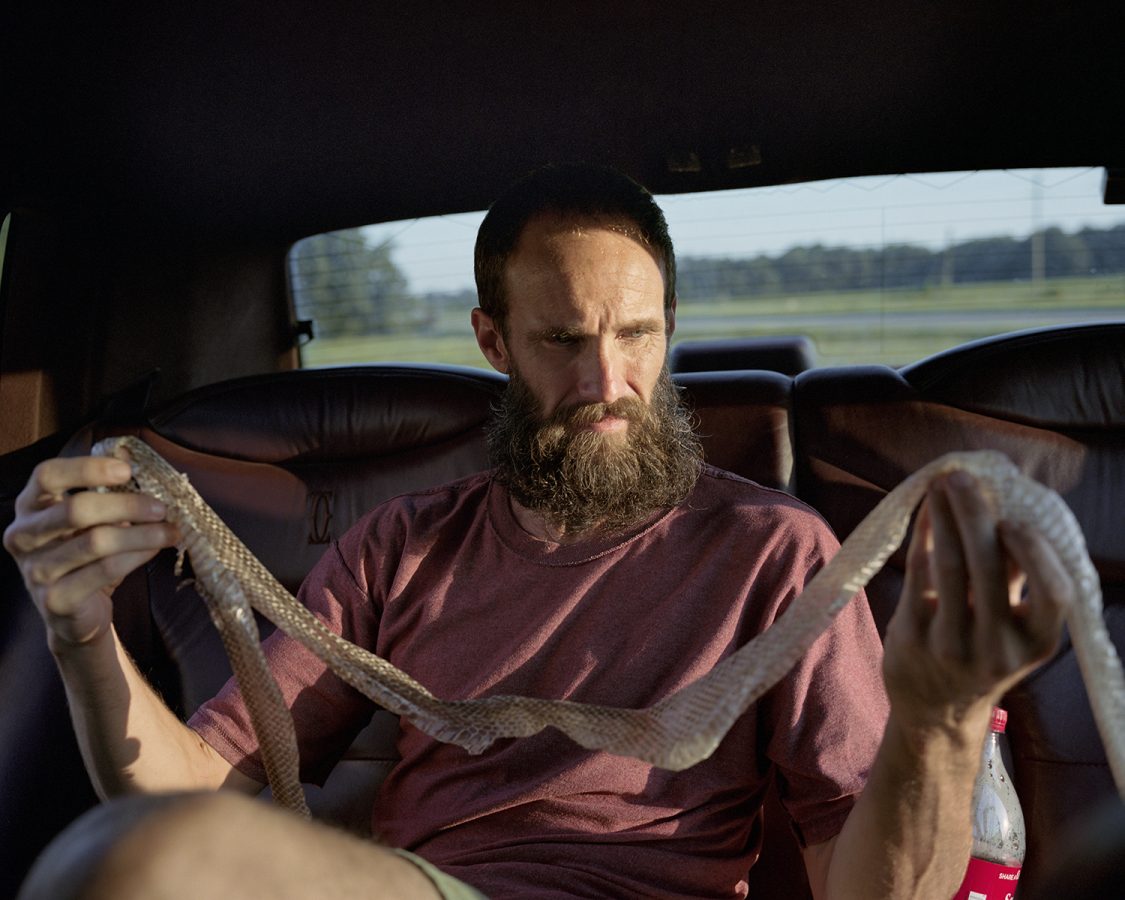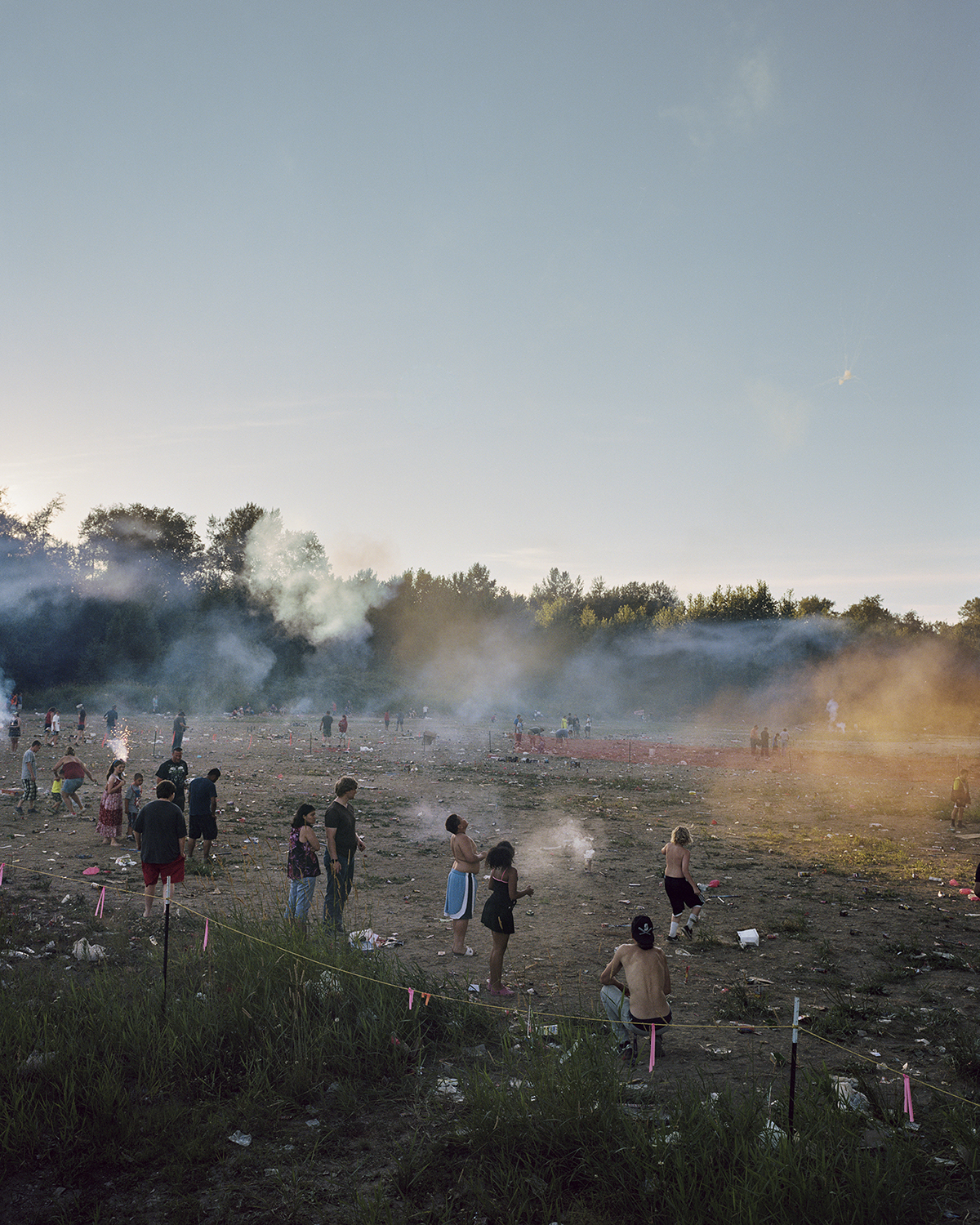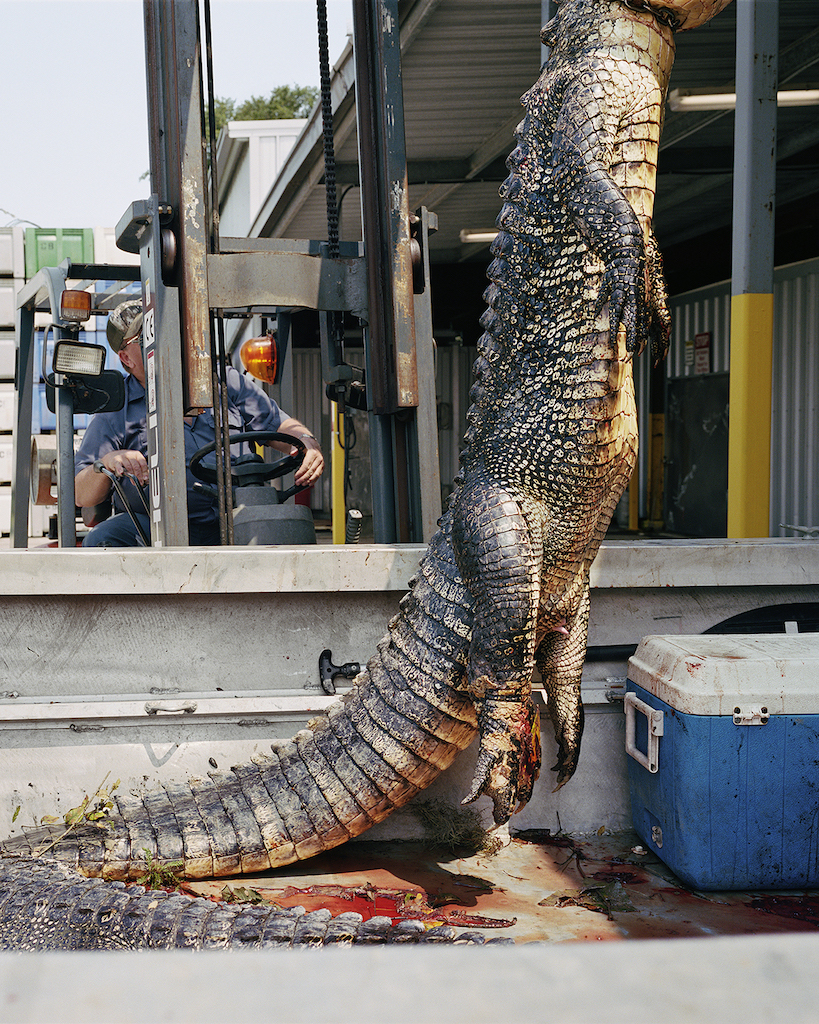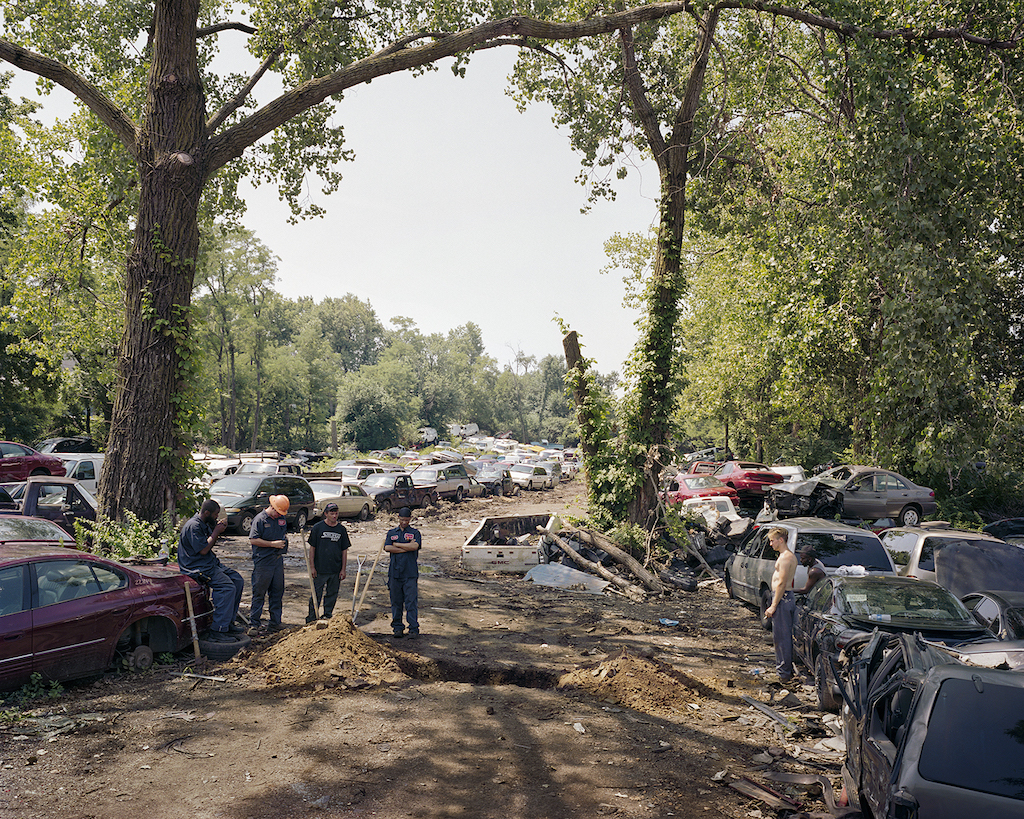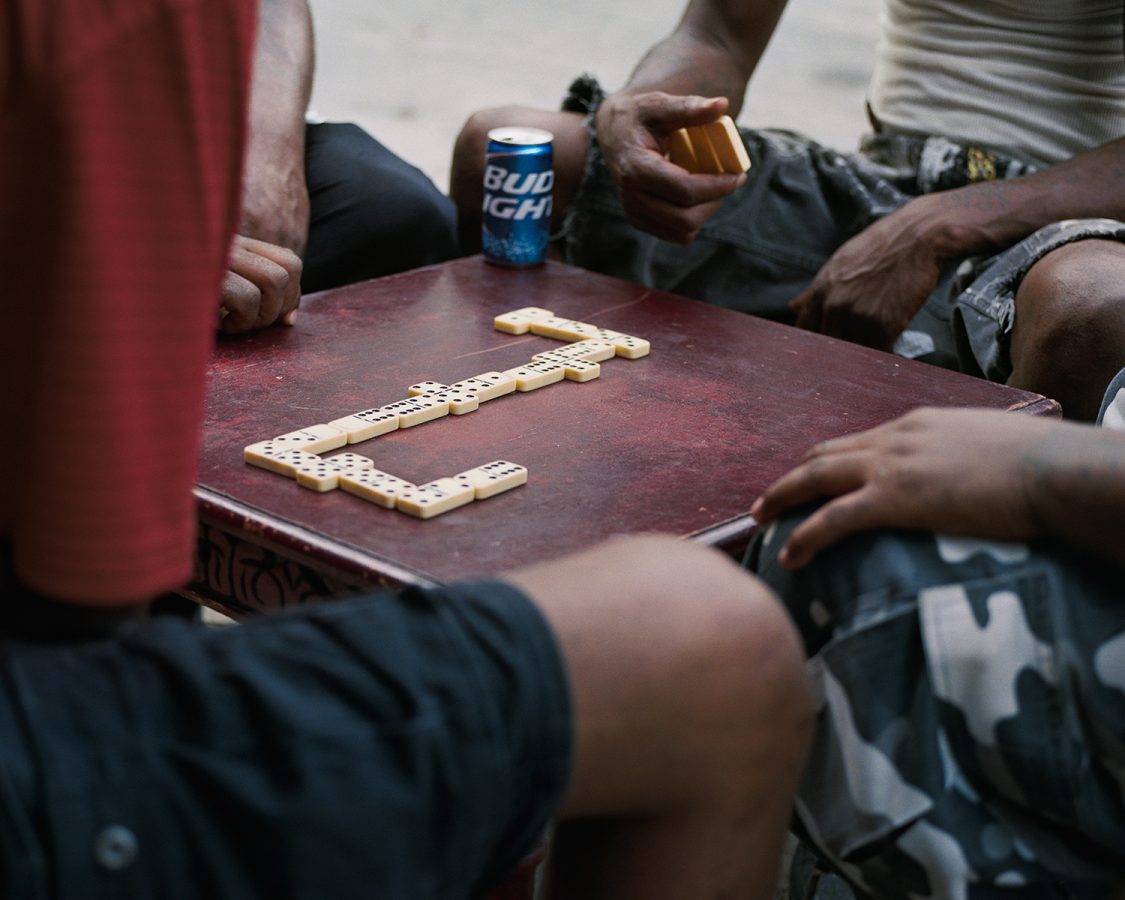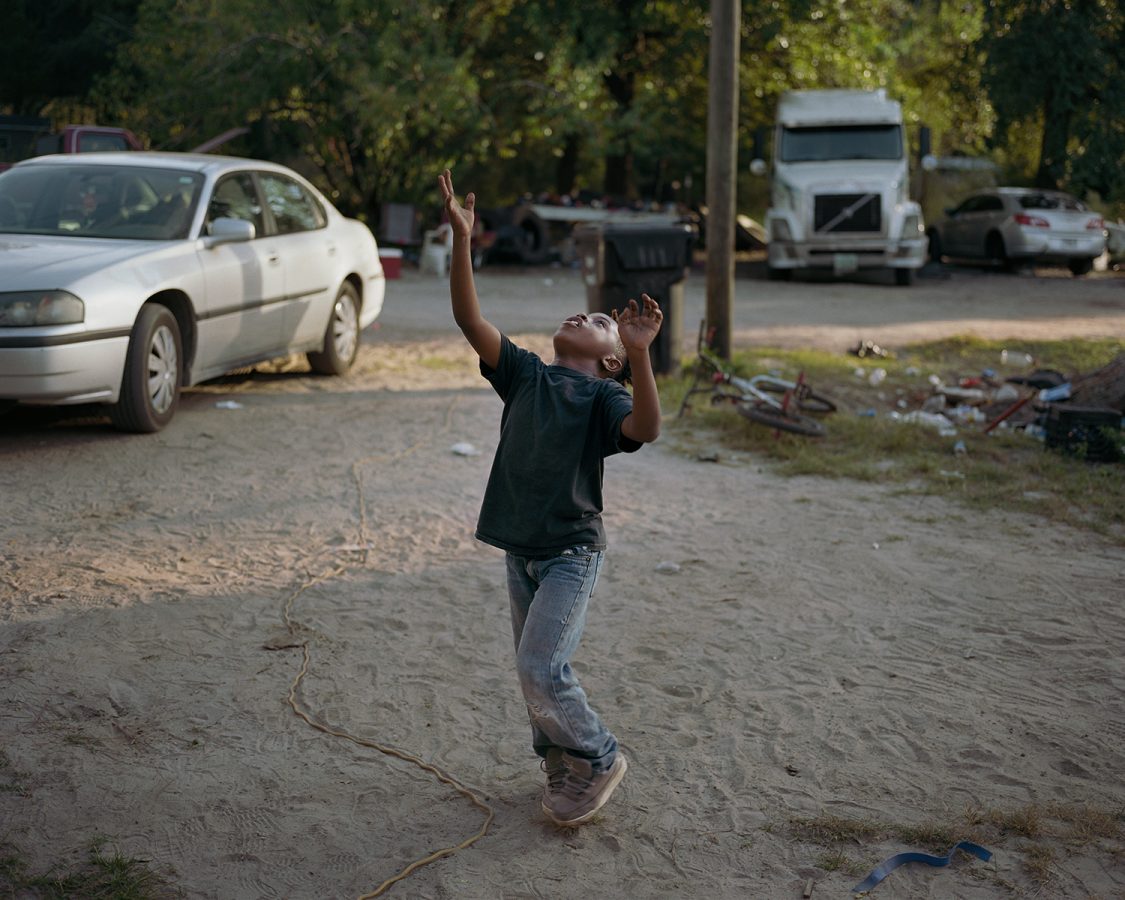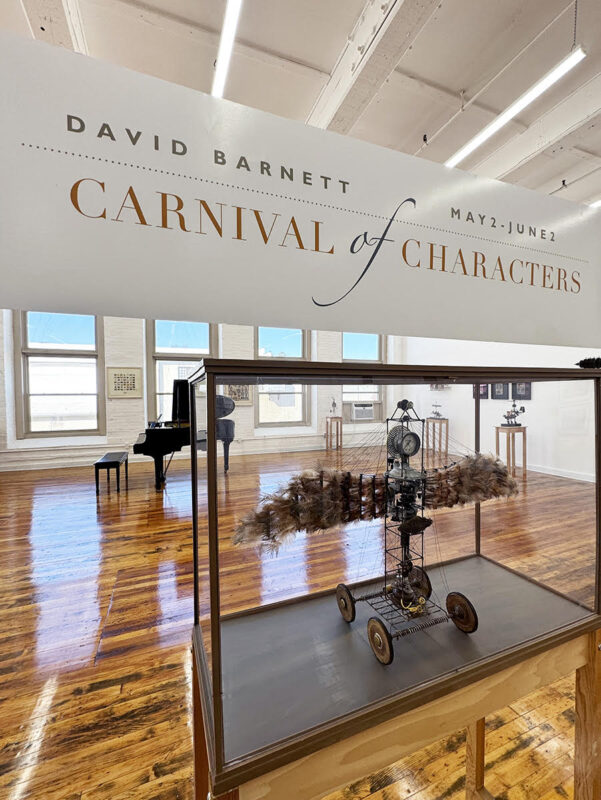Between 2010 and 2020, photographer Curran Hatleberg took a series of trips through the South, chiefly in eastern Texas, Louisiana, and northern Florida, meeting people and taking pictures. Meanwhile, the artist, who was born in Washington, DC, and his partner Cynthia Daignault, moved to her native Baltimore from Brooklyn and converted an industrial building in Remington to use as a studio. Early in 2020, Hatleberg and Daignault’s first child, River, was born and the concept for Hatleberg’s latest collection, River’s Dream, took shape.
At first glance, River’s Dream is a nightmarish vision of the backwoods South. The 65 color prints portray a world remote from booming Southern cities such as Charlotte, Atlanta, or Jacksonville. Hardly anyone in the book is working. Most industrial and commercial buildings pictured are vacant.
The houses are modest, and many are either abandoned or dilapidated. There are plenty of cars, but most of them are in scrapyards. A young man sits in the driver’s seat of a new-looking sedan, a young woman man beside him. But he is only pretending to drive; the car is facing a building. The bright red trucks and yellow turnout coats of first responders investigating an auto collision in a forlorn intersection make them look like beings from another planet.

